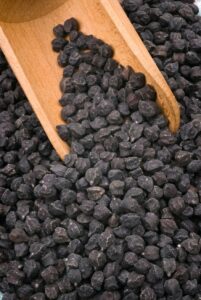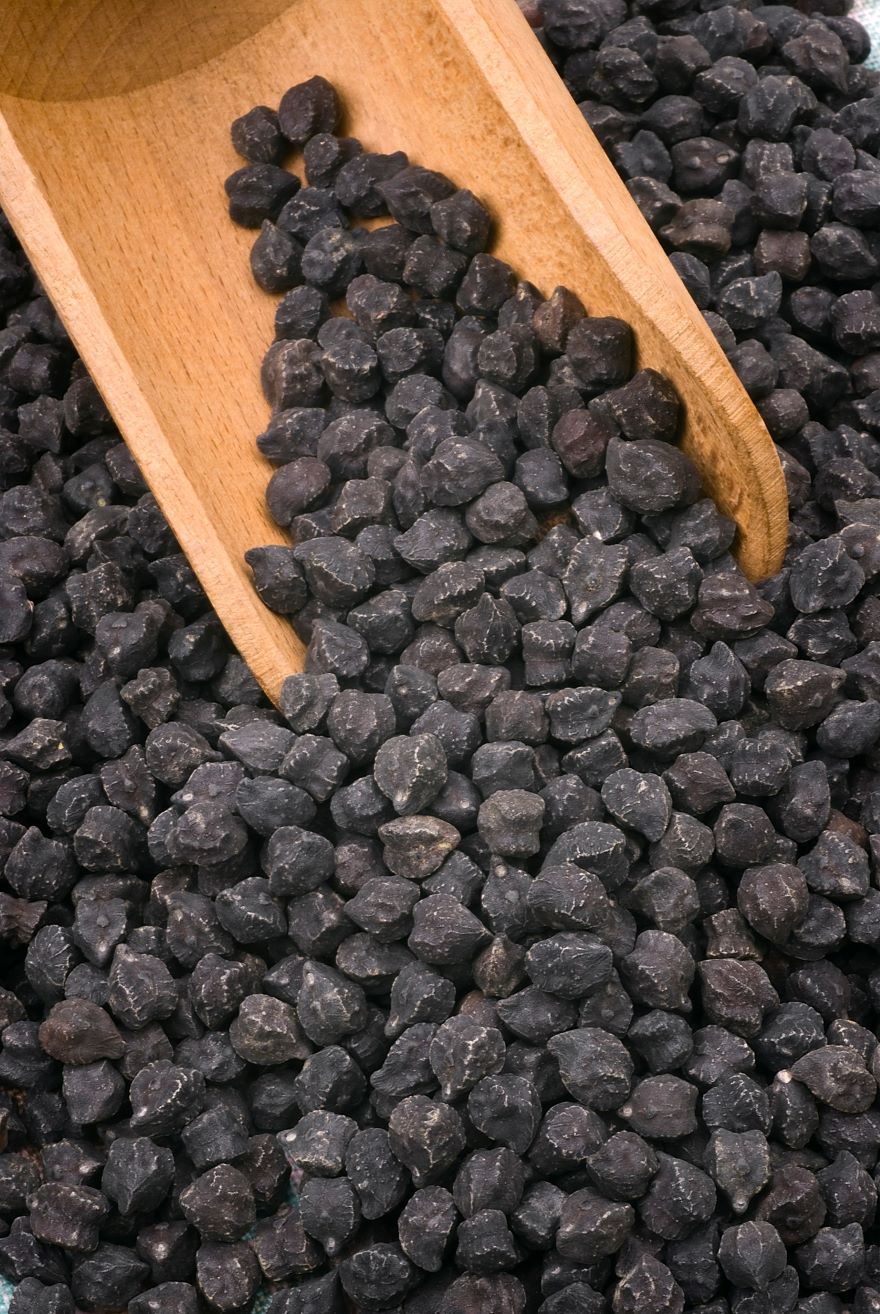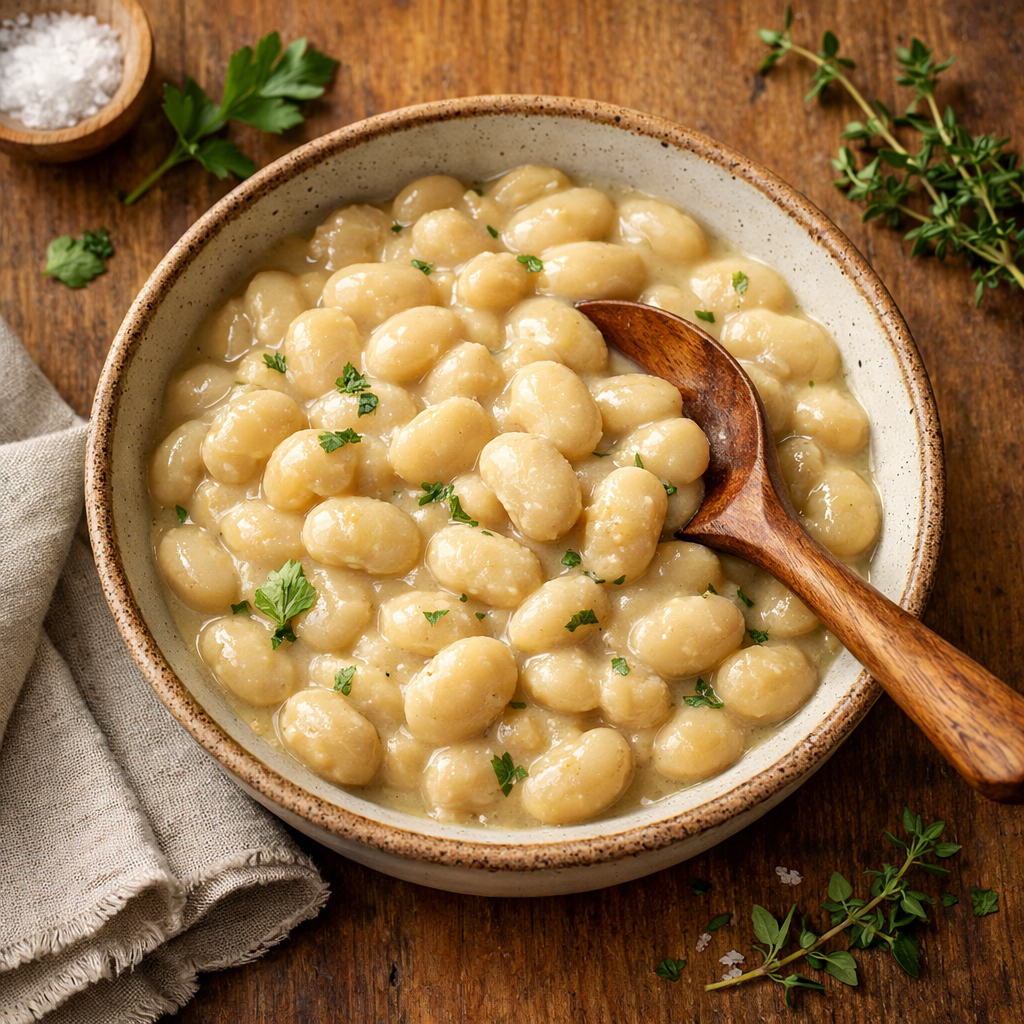I always see black chickpeas in the farmers market. But I see them as ordinary pantry staples, no different from any other protein-rich legume. But when I discovered their flavor and health benefits, everything changed.
Honestly, I walked past them for months. They sat there in their bins looking kind of intimidating – these small, dark, wrinkled things that didn’t look particularly appetizing. I kept buying the regular tan ones because that’s what I knew. Then I overheard someone at the market talking about how much better kala chana tastes than regular chickpeas, and I finally decided to give them a shot.

What Got Me Hooked
The texture is what sold me first. Regular chickpeas can get mushy if you’re not careful, but these black ones stay firm. You can cook them for an hour and they’ll still have a good bite to them. And the taste? It’s nuttier, earthier – almost like they have more personality than the standard variety.
I’d read online that black chickpeas were supposed to be better for you than the light ones. I figured that might just be marketing, but when I looked into it, there’s actually some truth to it. The dark color means they have more antioxidants. Same reason why dark berries are supposedly better for you than light ones.
These aren’t some new superfood trends either. People have been eating them in India for thousands of years. My local Indian grocery store owner, Raj, says his family back in Punjab has been growing them longer than anyone can remember.
A Little History I Found Interesting
I got curious about where these came from, so I did some digging. Turns out chickpeas are old – like really old. We’re talking Stone Age old. Archaeologists found chickpea remains in places like Turkey that are over 10,000 years old.

The black variety ended up being huge in India. In Hindu culture, they’re not just food – they’re used in religious ceremonies too. Raj explained that his family always makes a special black chickpea curry during certain festivals. It’s considered good luck or something like that.
Italy picked them up too, especially down south. They call them ceci neri and make this pancake thing called farinata that’s basically chickpea flour cooked until it’s crispy. I’ve heard it’s pretty good stuff from people who’ve tried it.
The Health Benefits
Here’s what a cup of cooked black chickpeas gets you: about 15 grams of protein and 12 grams of fiber. That’s more protein than two eggs and way more fiber than most people get in a whole day.
The iron content caught my attention because I don’t eat much red meat. One cup has about 5 milligrams of iron, which is decent for a plant food. My doctor was happy when my iron levels stayed good after I cut back on meat.
They’re loaded with folate too – important if you’re pregnant or trying to get pregnant. Plus magnesium, potassium, all that good mineral content that most of us probably don’t get enough of.
How I Cook Them
First rule: soak them overnight. I learned this the hard way after trying to cook them straight from the bag. Took forever and they were still tough. Now I put them in a big bowl with lots of water before I go to bed.
Next day, I drain them and either cook them on the stove for about an hour and a half, or use my pressure cooker for 25 minutes. I always make way more than I need because they freeze great. I portion them out in freezer bags with some of their cooking liquid.
Pro tip I picked up from reading online: add some garlic and ginger to the cooking water. Makes a huge difference in flavor. Sometimes I throw in a bay leaf or some cumin seeds too.
My Go-To Curry Recipe
This feeds my family of four with leftovers. It’s even better the next day.
You’ll need:
- 2 cups black chickpeas (soaked overnight)
- 2 big onions, chopped up
- 4 tomatoes, blended until smooth
- 1 tablespoon ginger-garlic paste (or mince your own)
- 2 green chilies, cut lengthwise
- 1 teaspoon cumin seeds
- 1 bay leaf
- 2 teaspoons garam masala
- 1 teaspoon ground coriander
- 1/2 teaspoon turmeric
- 1 teaspoon red chili powder (use less if you’re sensitive)
- 1/2 teaspoon amchur (dry mango powder – skip if you can’t find it)
- 3 tablespoons oil or ghee
- Cilantro for garnish
- Salt
Here’s how I make it:
Cook your soaked chickpeas in salted water until tender. If using a pressure cooker, 25 minutes does it. Save the cooking water – you’ll need it.
Heat oil in a heavy pot. Add cumin seeds and bay leaf. When they start popping, add the onions. Cook them until they’re golden brown – takes about 10 minutes but don’t rush it. This is where a lot of the flavor comes from.
Add ginger-garlic paste and green chilies. Cook for a couple minutes until it smells good. Then add all your dry spices – garam masala, coriander, turmeric, chili powder. Stir for about a minute.
Pour in the blended tomatoes. This is the messy part – it’ll splatter a bit. Cook this mixture until you see oil starting to separate around the edges. Takes about 10-12 minutes.
Add your cooked chickpeas and enough of their cooking liquid to make it saucy. Let it simmer for 20 minutes or so until it thickens up. Taste and add salt. Sprinkle in the amchur if you have it.
Sprinkle some chopped cilantro on top and serve with rice or naan.
A Mediterranean Salad That Works
This is my summer go-to. Great for meal prep too.
Ingredients:
- 2 cups cooked black chickpeas
- 1 eggplant, cubed
- 2 zucchini, sliced
- 1 red pepper, cut in strips
- 1 red onion, cut in chunks
- 5 cups mixed greens
- 1/2 cup sun-dried tomatoes, chopped
- 1/3 cup kalamata olives, halved
- 1/4 cup fresh basil
- 1/4 cup pine nuts
For dressing:
- 1/4 cup olive oil
- 2 tablespoons balsamic vinegar
- 1 tablespoon lemon juice
- 2 garlic cloves, minced
- 1 teaspoon oregano
- Salt and pepper

Put it together:
Heat oven to 425°F. Toss all the cut vegetables with a little olive oil, salt, and pepper. Spread them on a baking sheet – don’t crowd them or they’ll steam instead of roast.
Roast for 25-30 minutes until they’re tender and a little caramelized. Stir them once halfway through.
Mix up your dressing in a small bowl.
Combine everything in a big salad bowl – greens, chickpeas, roasted vegetables, sun-dried tomatoes, olives. Pour dressing over and toss. Top with basil and pine nuts.
Let it sit for 15 minutes before serving if you can. The flavors blend together better.
What I’ve Noticed Health-Wise
My energy levels are more steady throughout the day. I used to crash around 3 PM, but that doesn’t happen as much now. I think it’s the combination of protein and fiber – keeps me full longer without the sugar highs and lows. My digestion improved too.
Things are more regular since I started eating more fiber. And I feel satisfied after meals in a way that lasts. The iron thing has been good for me since I cut way back on red meat. My last blood work showed my iron levels are still in good range.
Environmental Angle
These are pretty drought-tolerant compared to a lot of crops. They don’t need tons of water like some other protein sources do. And they actually help the soil – something about fixing nitrogen, which is good for whatever gets planted there next.
In places where water is scarce, black chickpeas can be a reliable crop that provides good nutrition. Supporting farmers who grow them helps promote sustainable agriculture.
Working Them Into Regular Meals
I keep cooked ones in the freezer all the time. They thaw fast and I can throw them into almost anything – soups, salads, pasta dishes, grain bowls. Sometimes I just heat them up with some garlic and olive oil as a side dish.
Sprouting them is interesting too. Soak them for 24 hours, then rinse and leave them in a jar for a couple days. They’ll start sprouting and you can eat them raw in salads. Crunchy and fresh-tasting.
For quick weeknight dinners, I mash them up with some spices and make patties. Or blend them into hummus – it comes out darker but tastes great.
Things to Watch Out For
They take longer to cook than regular chickpeas, so plan ahead. If you’re not used to eating a lot of fiber, start slow or you might get bloated. I learned that one the hard way.
Some people find them harder to digest than regular chickpeas. Adding digestive spices like cumin or fennel when you cook them can help. I’ve read that adding a pinch of asafoetida helps too, but that’s hard to find unless you have an Indian market nearby.
My Final Take
I’m not going to oversell black chickpeas, but they’ve become a weekly staple in my kitchen. The biggest difference I notice is how they hold together when cooking. Regular chickpeas turn to mush if you cook them too long, but these stay firm no matter what I throw at them.
The extra protein and fiber are nice, but honestly, I just feel more satisfied after eating them. That 3 PM energy crash I used to get? Happens way less now. Maybe it’s the steady blood sugar from all that fiber, or maybe I’m just imagining things. Either way, I feel better.
Soaking them overnight seemed like a pain at first, but it’s become routine. I just dump them in water before bed and forget about them. The next day they cook up perfectly – no different from regular beans except they actually taste like something.
I was worried about finding them, but my regular grocery store started carrying them last year. If yours doesn’t have them, try the health food section or ask customer service. Indian markets always have them if you’re near one.
Start with that curry recipe if you’re nervous. I’ve made it dozens of times and it always works out. Even when I mess up the spice amounts, it’s still edible. You’re risking maybe five bucks on a bag of chickpeas, and worst case you’re out the cost of dinner.
These aren’t going to change your life or anything dramatic. They’re just better chickpeas – more flavor, better texture, more nutrition. Once you try them, regular chickpeas taste bland and mushy by comparison. That’s been my experience anyway.
Ready to Give Black Chickpeas a Try?
Quit overthinking it and just buy some. Add black chickpeas to your shopping list this week. When you get home, dump them in a bowl with water before you go to bed. Tomorrow, follow that curry recipe I wrote about.
My first time making them was decent – not amazing, but I ate the whole pot. The recipe works even if you’re not great at cooking.
You’ll have something new to cook that actually tastes different from the usual stuff. And you’ll finally use those dark chickpeas you keep seeing at the store instead of wondering what they’re for.
No more excuses. Get cooking.

*We may earn a commission for purchases made using our links. Please see our disclosure to learn more.



